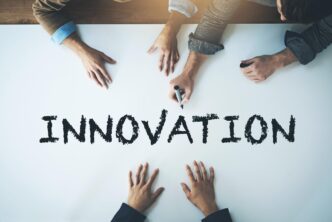Executive Summary
The Trajectory So Far
The Business Implication
Stakeholder Perspectives
Traditional businesses, often characterized by established processes, legacy systems, and a deeply ingrained corporate culture, face an increasingly urgent mandate to innovate. This imperative stems from rapid technological advancements, shifting consumer behaviors, and the relentless disruption posed by agile, digitally native competitors. The question is not if they can innovate, but how; the answer lies in a strategic, multi-faceted approach involving leadership commitment, cultural transformation, and the adoption of modern methodologies and technologies, ultimately ensuring their relevance and sustained growth in a dynamic global marketplace.
The Imperative for Innovation in Traditional Sectors
For decades, many traditional businesses thrived on predictable markets and incremental improvements. However, the digital age has fundamentally altered this landscape, making complacency a direct path to obsolescence. Industries from retail to manufacturing, finance to healthcare, are experiencing unprecedented rates of change, driven by artificial intelligence, automation, and ubiquitous connectivity.
Innovation is no longer a luxury but a core survival mechanism. It allows established companies to adapt to new market demands, create differentiated products and services, and optimize their internal operations. Without a proactive stance on innovation, even the most entrenched businesses risk being outmaneuvered by nimbler startups or more forward-thinking competitors.
Common Hurdles for Established Enterprises
Despite the clear need, traditional businesses often encounter significant obstacles when attempting to innovate. One primary challenge is the weight of legacy systems and infrastructure, which can be costly and complex to update or replace. These older systems often restrict agility and hinder the seamless integration of new technologies.
Another major hurdle is organizational culture. Many traditional companies operate with hierarchical structures, risk-averse mindsets, and a reluctance to challenge the status quo. This can stifle creativity, discourage experimentation, and make employees hesitant to propose novel ideas for fear of failure or disapproval. Bureaucracy and slow decision-making processes further compound these issues, making it difficult to respond quickly to market shifts.
Furthermore, a lack of specialized talent in emerging technologies can impede innovation efforts. Traditional businesses may struggle to attract and retain individuals with expertise in areas like data science, AI development, or user experience design, which are crucial for driving modern innovation initiatives.
Cultivating an Innovation-Driven Culture
The journey toward innovation begins with a fundamental shift in organizational culture. This requires a conscious effort to foster an environment where new ideas are encouraged, experimentation is valued, and failure is viewed as a learning opportunity rather than a setback.
Leadership Buy-In and Vision
Innovation must be championed from the very top. Senior leadership needs to articulate a clear vision for innovation, communicate its strategic importance, and allocate the necessary resources. Their visible commitment signals to the entire organization that innovation is a priority and not just a passing trend.
Leaders must actively participate in innovation initiatives, celebrate successes, and visibly support teams that take calculated risks. This creates a psychological safety net, encouraging employees to step outside their comfort zones and contribute creative solutions. A strong, consistent message from leadership is paramount to overcoming cultural inertia.
Empowering Employees and Fostering Psychological Safety
Innovation thrives when employees feel empowered to contribute their ideas and insights, regardless of their position. Companies should establish mechanisms for idea submission, feedback, and development. This could include innovation challenges, hackathons, or dedicated platforms for sharing proposals.
Crucially, a culture of psychological safety ensures that employees do not fear negative repercussions for suggesting unconventional ideas or admitting mistakes. When people feel safe to experiment and fail fast, they are more likely to push boundaries and discover truly novel solutions. This environment fosters a continuous learning loop essential for sustained innovation.
Cross-Functional Collaboration
Breaking down departmental silos is vital for fostering comprehensive innovation. Diverse perspectives from different areas of the business can lead to more robust and well-rounded solutions. Cross-functional teams can leverage varied expertise to tackle complex problems and develop products or services that address multiple aspects of customer needs.
Establishing clear communication channels and collaborative platforms can facilitate this interaction. Encouraging regular inter-departmental meetings, workshops, and project-based teamwork helps bridge divides and ensures that innovation efforts are integrated across the organization rather than isolated within specific teams.
Strategic Approaches to Innovation
Beyond cultural shifts, traditional businesses need concrete strategies to implement innovation effectively. These approaches range from looking outward for inspiration to adopting iterative development cycles.
Open Innovation and Partnerships
Traditional companies do not need to innovate in isolation. Engaging in open innovation, which involves collaborating with external partners such as startups, universities, or even customers, can bring fresh perspectives and accelerate development cycles. This can take the form of joint ventures, incubation programs, or strategic investments in promising new technologies.
Partnerships allow businesses to access specialized knowledge, new technologies, and a broader talent pool without the need for extensive internal development. It also helps mitigate risk by sharing the burden of R&D and market exploration.
Customer-Centric Design
True innovation often originates from a deep understanding of customer needs and pain points. Adopting a customer-centric design approach means continually gathering feedback, observing user behavior, and co-creating solutions with target audiences. This ensures that new products or services genuinely solve problems and add value.
Techniques like design thinking, user journey mapping, and persona development help teams empathize with customers and develop solutions that resonate. This approach reduces the risk of investing in innovations that ultimately fail to meet market demand.
Experimentation and Prototyping
Instead of investing heavily in a single, large-scale innovation, traditional businesses should embrace a philosophy of rapid experimentation. This involves developing minimal viable products (MVPs) or prototypes to test ideas quickly and affordably. By gathering early feedback, companies can iterate and refine their offerings before committing significant resources.
This iterative process minimizes risk and allows for continuous improvement based on real-world data. It shifts the focus from achieving perfection in the first iteration to learning and adapting quickly, which is crucial in fast-moving markets.
Agile Methodologies
Implementing agile methodologies, often associated with software development, can significantly boost innovation across various business functions. Agile emphasizes iterative development, cross-functional teams, and flexible responses to change. It allows teams to break down complex projects into smaller, manageable tasks and deliver value incrementally.
By adopting agile, traditional businesses can reduce time-to-market for new products and services, improve collaboration, and ensure that their innovation efforts remain aligned with evolving business objectives and customer needs. This framework fosters adaptability and responsiveness, key attributes for innovative organizations.
Leveraging Technology and Data
Modern innovation is inextricably linked to technology and data. Traditional businesses must strategically invest in and integrate these tools to drive their transformation.
Digital Transformation Initiatives
A comprehensive digital transformation involves more than just adopting new software; it’s about re-imagining business processes, customer interactions, and operational models through digital lenses. This can include automating workflows, enhancing digital customer touchpoints, and creating new digital products or services.
Digital transformation provides the foundational infrastructure and capabilities necessary for sustained innovation. It enables businesses to operate more efficiently, gather richer data, and interact with customers in more personalized and effective ways.
Data Analytics and AI
The ability to collect, analyze, and act upon data is a cornerstone of modern innovation. Traditional businesses should invest in robust data analytics capabilities to uncover insights into customer behavior, market trends, and operational efficiencies. Artificial intelligence and machine learning can further enhance these capabilities, automating analysis and predicting future outcomes.
Leveraging data allows companies to make informed decisions, personalize offerings, and identify new opportunities for innovation. AI can also power intelligent automation, optimize supply chains, and even drive the creation of entirely new AI-driven products.
Cloud Computing and Scalability
Cloud computing offers traditional businesses the flexibility, scalability, and cost-effectiveness needed to support innovation initiatives. By moving infrastructure and applications to the cloud, companies can reduce reliance on costly on-premise systems and quickly deploy new tools and services without significant upfront investment.
The cloud provides an agile environment for experimentation, allowing teams to spin up and tear down resources as needed. This flexibility is crucial for testing new ideas, scaling successful innovations, and maintaining a competitive edge in a rapidly changing technological landscape.
Measuring and Sustaining Innovation
Innovation is not a one-time project but an ongoing process. Traditional businesses need to establish metrics to track their innovation efforts and create mechanisms to sustain them over the long term.
Key performance indicators (KPIs) for innovation might include the number of new products launched, revenue generated from new offerings, patent applications, employee engagement in innovation programs, or time-to-market for new features. Regularly reviewing these metrics helps assess the effectiveness of strategies and identify areas for improvement.
To sustain innovation, companies should establish dedicated innovation labs or teams, allocate specific budgets for R&D, and continuously invest in employee training and development. Creating a culture of continuous learning and adaptation ensures that the business remains agile and forward-thinking, ready to tackle future challenges and seize emerging opportunities.
The journey for traditional businesses to embrace and master innovation is challenging but absolutely essential for long-term viability. By fostering a supportive culture, adopting strategic approaches, leveraging cutting-edge technology, and committing to continuous learning, established enterprises can not only survive but thrive in an era defined by constant change. The ability to pivot, adapt, and create new value will ultimately define their success in the digital economy.








